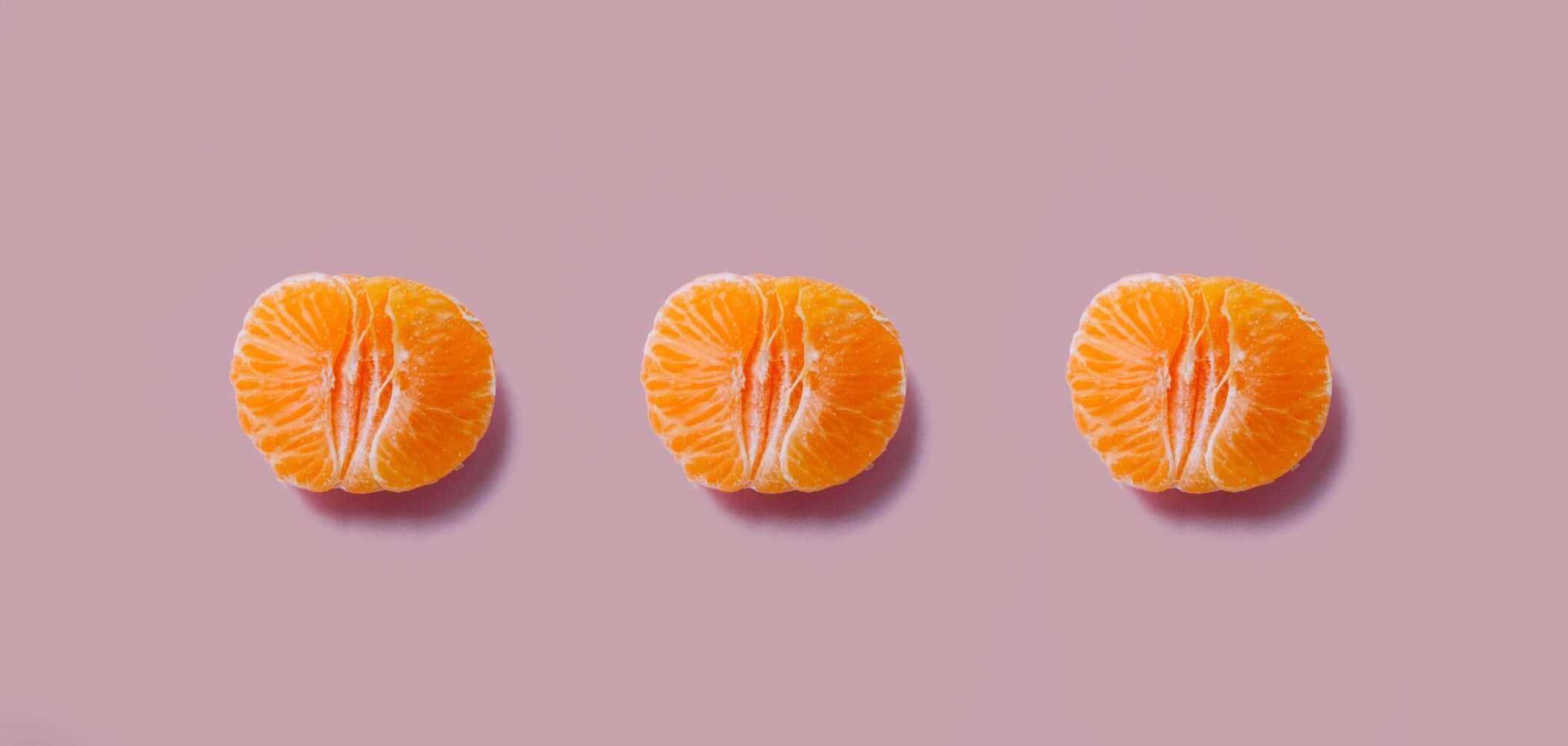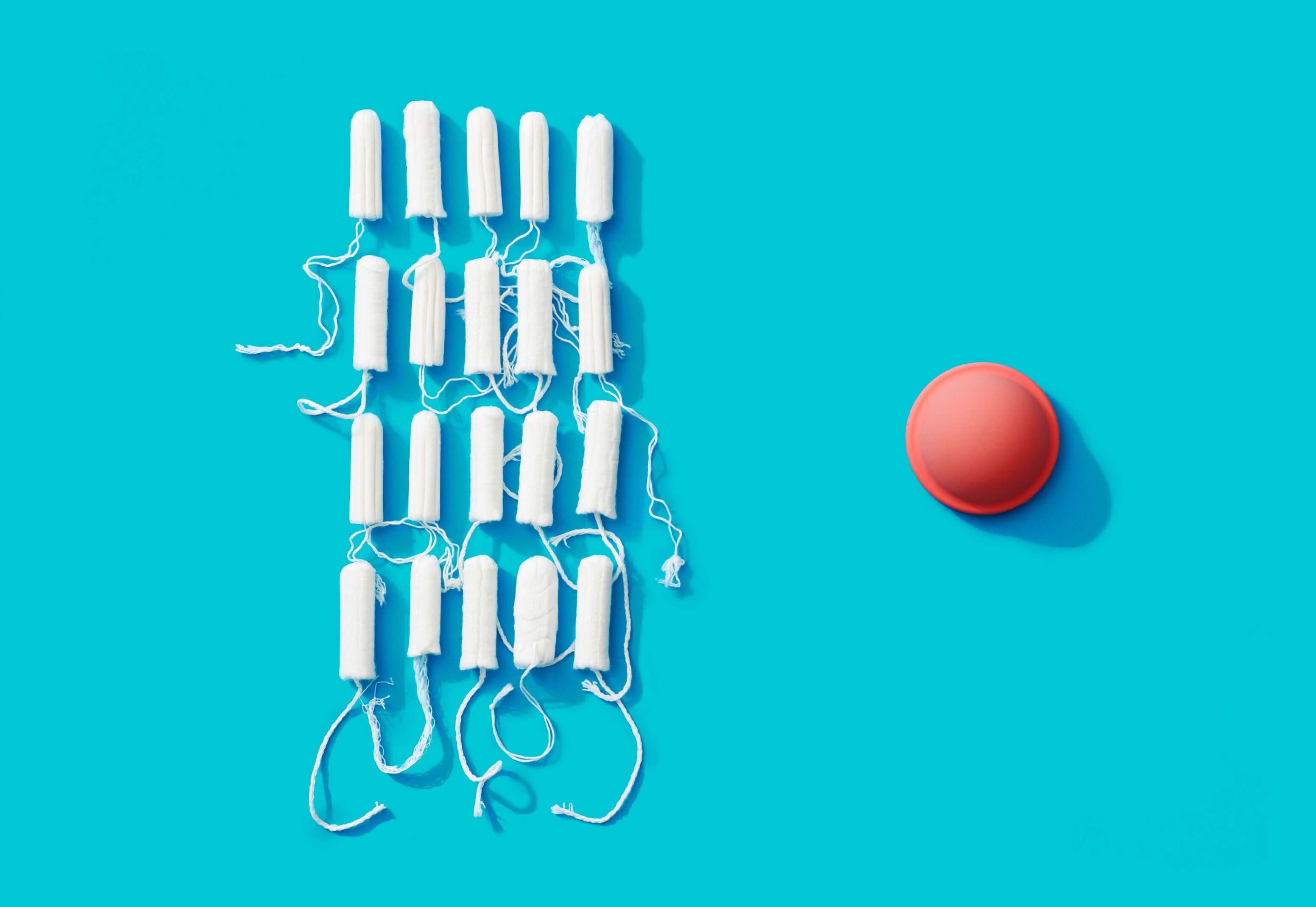Silence around periods
In many parts of the world, the menstrual cycle has been seen as a dirty business, hardly treated as a natural part of life and rarely discussed publicly and/or privately. In some cultures, menstruators are sent away from their homes to huts without any facilities to manage their menstruation until their periods are over. There are some beliefs that people who menstruate can even spoil food and are therefore not allowed in the kitchen. In many of the major religious texts, those who menstruate are referred to as unclean. Menstruation can also be associated with mysticism, magic and even sorcery. Once, it was even thought that those who menstruate needed to bleed to release any emotional and hysterical behaviours. The menstrual cycle has been perceived as one’s weakness and thus reinforcing the idea that people who menstruate have fewer rights than non-menstruators.
It is not surprising, then, that menstruation has always been a hidden part of people’s lives. To this day, menstruators often hide the fact that they are on their periods to avoid being considered debilitated and irrational in their behaviour or decision-making. The taboo also demonstrates itself in the language commonly used. Often terms like period, menstruation and blood are avoided and replaced with “on the rag”, “on the blob” or “Aunt Flo”. This stems from the fact that people tend to choose euphemisms and metaphors when speaking about things restricted or socially unacceptable. Moreover, the ubiquitous use of words like sanitary or hygienic only implies and reinforces the notion that periods are dirty.
Taboos and often lack of knowledge on menstrual flow have led to the creation of a massive “feminine care” industry which, for years now, have been leeching off of period stigma, rather than improving and caring about the lives and wellbeing of people who menstruate. These companies have commodified and harmed menstruators’ health through the provision of their disposable products.
The shame around periods and a deeply embedded misconception about one of the most natural parts of human life have significantly contributed to the environmental crisis we currently face. Not only do the products contain harmful chemicals, they also account for 0.5% of a person’s overall trash load during a lifetime of menstruating. An average person in the UK disposes of around 200kg of menstrual products in their life, a staggering amount which will invariably be deposited in landfills or in many cases will end up contributing to the pollution of oceans and rivers. The British Marine Conservation Society’s data shows that 4.8 pieces of menstrual waste is found on a 100m stretch of beach. The widely acceptable way of period management is therefore harmful both for the menstruators and the natural environment.
How did it all start?
People had managed their periods before disposable menstrual pads and tampons became widely available in stores. Softened papyrus was used in ancient Egypt and vegetable fibres in Indonesia. Under the Roman Empire woollen tampons (or rather paraphernalia resembling tampons) were believed to be used for managing the blood flow. People are also thought to have used cotton, leather, sheep’s wool, plants to stem the menstrual flow. Even today, a widely popular form of managing periods is using materials found in nature or ragged clothes.
To paraphrase a common proverb, war is the mother of all inventions. Highly absorbent properties of fabric used during World War I were inspiration for contemporary pads and tampons. During the war, French nurses noticed disposable cellulose bandages were very absorbent and could curb the flow of blood, at the same time, they were also cheap enough to be thrown away after each use. Nurses started using them to handle their own periods. Pads became commercially available, although still used with a supportive sanitary belt, only to disappear for good in the early 80s.
The arrival of modern menstrual products in Western countries, liberated menstruators and allowed them to participate in a quickly modernising society, however, it did not contribute to breaking any taboos around periods. On the contrary, it could be argued that this popularisation may have reinforced taboos. At some point in the United States, a box was introduced where customers could place their money, without asking a clerk for a product, and discreetly pick up a box of pads from the counter. As pads were becoming increasingly popular, the prices started dropping while demand rose.
Another form of menstrual management was also being developed around that time. The innovators went back to the old concept of an intravaginal device for blood absorption and started exploring available fabrics and materials. In 1929, Dr Earle Haas invented and patented the applicator tampon. A tightly bound strip of cotton with a string attached was placed in the applicator that was intended to keep it clean and allow the user to insert it without having to touch their intimate parts of their body. His patent was later purchased by Gertrude Tendrich who became a founder of Tampax.
The use of tampons was popularised during Word War II despite religious claims that their use would take virginity away. In 1940s Germany, a highly absorbent tampon was developed without an applicator, today known as O.B. In the 70s. scented tampons were added to the available range. In 1975 a new tea-shaped tampon, Rely, was introduced which claimed to have been extremely absorbent due to the use of synthetic materials. After 5 years of being on the market, the product had to be recalled due to a high rise of toxic syndrome shock (TSS) cases related to the synthetics used. Reportedly 812 cases of TSS were recorded, 38 of them were fatal.
Despite that, the Consumer Reports article, in 1986, named the tampon, alongside air conditioning and running shoes, as one of the “50 small wonders and big deals that revolutionized the lives of consumers”. Tampons and pads are now widely commercially available in many countries.
Disposability and design
It is undeniable that “small wonders” like disposable pads and tampons have helped people who menstruate to increase their participation in society, education and culture. Nevertheless, their disposability and profitability of the industry behind them, have had a detrimental effect on the environment.
The design of menstrual products has been dictated by taboos and shame around periods. Each pad or tampon is separately packed in plastic wrappers, so they are portable and easily concealed. The business model behind menstrual products is the epitome of linear economy and its high profitability stems from the “single use” model adopted. Menstruators need to purchase sufficient amounts monthly, change it often to avoid “period smell” and health complications. Finally, the used product is disposed using the wrapping provided to hide the blood from anyone’s view and be forgotten in the toilet’s bin. “Un-ladylikeness” of touching intimate body parts made tampons with plastic applicators widely popular, especially in the United States where, in 2015, 80% of tampons bought included applicators. It is important to also note that so called digital or non-applicator tampons are not free from plastic as they contain plastic in both their body and in the string, up to 10%.
A pack of menstrual disposable pads are made of up to 90% plastic, an equivalent to 4 plastic bags. The rest of a pad is made from wood pulp, and tampons are cotton, rayon, or a combination. On average, a person uses between 11,000 and 16,000 tampons and 12,000 pads in their lifetime. The products then end their lifecycle in landfills, or even worse in open dumps where all the chemicals present penetrate the soil and end up in groundwaters. Flushed tampons and pads are also a major issue. There are approximately 370,00 sewer blockages throughout the UK every year, of which up to 80% are caused by fats, oils and grease, wet wipes, sanitary waste and other unflushable items. A study conducted by Anglian Water shows that 41% of the respondents admitted that they didn’t know menstrual products are unflushable or that they harm the environment.
Finally, to meet customers’ needs, menstrual items production has become highly resource-demanding and leaves an extensive carbon footprint. A year’s worth of a typical, disposable menstrual product requires 5.3 kg CO2, whereas a menstrual cup will only require 0.04kg CO2.
About added nasties
The business-as-usual model encourages people who menstruate to hide their periods and to continue to buy products to feel feminine and carry an active lifestyle (99% of commercials) but also suggests that periods are inherently unnatural.
For centuries, menstrual blood has been perceived unladylike and unsanitary and the only way to manage it was to use whiter-than- white sanitary pads and tampons, preferably with an applicator to avoid touching anatomical parts. Later, the cocktail of chemicals was introduced, or fragrance as big companies prefer to call it, was added to mask any possible smell of menstrual blood.
The belief that the menstrual flow is unnatural, unsanitary and dirty is a subject pertinent to sanitation and hygiene issues. And what says hygienic and sanitary more so than the white appearance of pads and tampons? The colour misleadingly suggests that these products are somehow bacteria-free and therefore ready to conquer the abnormal process of menstruation.
The process of bleaching or as big companies call it, purification, uses chlorine and creates a by-product known as the toxic dioxin. Dioxin is considered to be part of a group of chemicals referred to as endocrine disruptors because they interfere with hormones. Even though since the late 1990s most of the major companies switched to different methods of bleaching, the levels of dioxin were only diminished and due to vagina lining’s high permeability, even a small exposure can accumulate over time and be passed to the bloodstream. Apart from dioxins, synthetic fibres and petrochemical additives can be found in both in pads and in tampons. Synthetics and plastic can also diminish the air flow and create a damp and warm condition which are the perfect environment for bacteria to thrive. Many of today’s products also contain rayon and viscose which are extremely dangerous due to their high absorbency, which thereby raises the risk of TSS.
In the process of pads and tampons production, various fragrances are marketed to help menstruators always feel fresh. This only reinforces the taboo that periods are unsanitary, dirty and that they smell.
Companies have been questioned as to what their added fragrance contains and have failed to provide any transparent and satisfactory answer. It is claimed that synthetic fragrances can be made up of a cocktail of over 3,000 chemicals and can contain carcinogens, allergens, irritants and endocrine disrupting chemicals. According to gynaecologists, scented products can cause irritation, itching and unnatural discharge. It is important to note that no other product available on the market that is aimed to stop bleeding has any added scent. It is only menstrual blood that needs to be hidden from the view or the nose of others.
Finally, in order to meet the demand for cotton production, chemical pesticides are widely used. Residues of a possible carcinogen, glyphosate, have been found in some panty liners and tampons. Glyphosate is the world’s most widely sold weedkiller.
Environmenstrual
With all the popularity, accessibility and affordability, it’s not difficult to realise why a transition towards reusable menstrual products such as the menstrual cup, reusable cloth pads, and periods pants is taking so long. Taboos have been reinforced by the powerful and global market of “femcare” products which created a certain path of dependence that we as customers tend follow.
Education is therefore the key to breaking the taboos, cultural stereotypes and by extension will allow us to live healthier and more sustainable lives without contributing towards an environmental catastrophe. It’s vital that users and wider society are provided with comprehensive and unbiased information on both reusable and disposable options, so that choices can be made conscientiously.
There is an overdue need to challenge the shame and deconstruct socio-cultural taboos around menstruation, to popularise knowledge about periods, to support brands which minimise their impact on the environment, and last but not least to support everyone who menstruates.
How to get involved in Environmenstrual Week of Action 2019
Last year the first Environmenstrual Week of Action took place during the week of 13th-20th October 2018. Together with a coalition of 42 organisations, charities, businesses and menstrual-preneurs and sponsors Thames Water and Anglian Water, we promoted reusables and organic menstrual products and the environmental and health impacts of plastics and single-use menstrual products. Events were held around the UK and in the USA and Canada. This included the first Environmenstrual Festival at the GLA at City Hall. The evening included a panel, Q&A, fashion show, live theatre by The Twisted Hares and stalls.
Environmenstrual Week this year is set for October 12th-19th 2019 and will be bigger and better - so stay tuned for more news. With the coalition growing to 50 strong and new members joining like Nixit and the Women’s Institute (WI), there are plans to make more noise, with an aim to hold over 150 events during the week nationwide. Our toolkit of activity ideas is set to be released in July 2019 which includes a range of ideas to take #PeriodAction from campaign letters, coffee mornings, quiz and movie nights, and more Environmenstrual goodies.
We are excited that Women’s Environmental Network (Wen), with the support of Waitrose’s Plan Plastic initiative, will host the Environmenstrual Festival, held at Amnesty International’s headquarters in London on Wednesday 16th October (from 6.30pm). The festival promises taster workshops and ensembles of pad making, cups, vulvas, and more + ecofeminist period-inspired art and fashion. There will also be a stellar speaker panel focusing on the links between plastic-free periods and period taboos. More details coming soon here www.wen.org.uk and on Wen’s social media!
Follow us on Instagram: @environmenstrual
Author: Marta Stencel, Environmenstrual Campaign Volunteer at Wen





